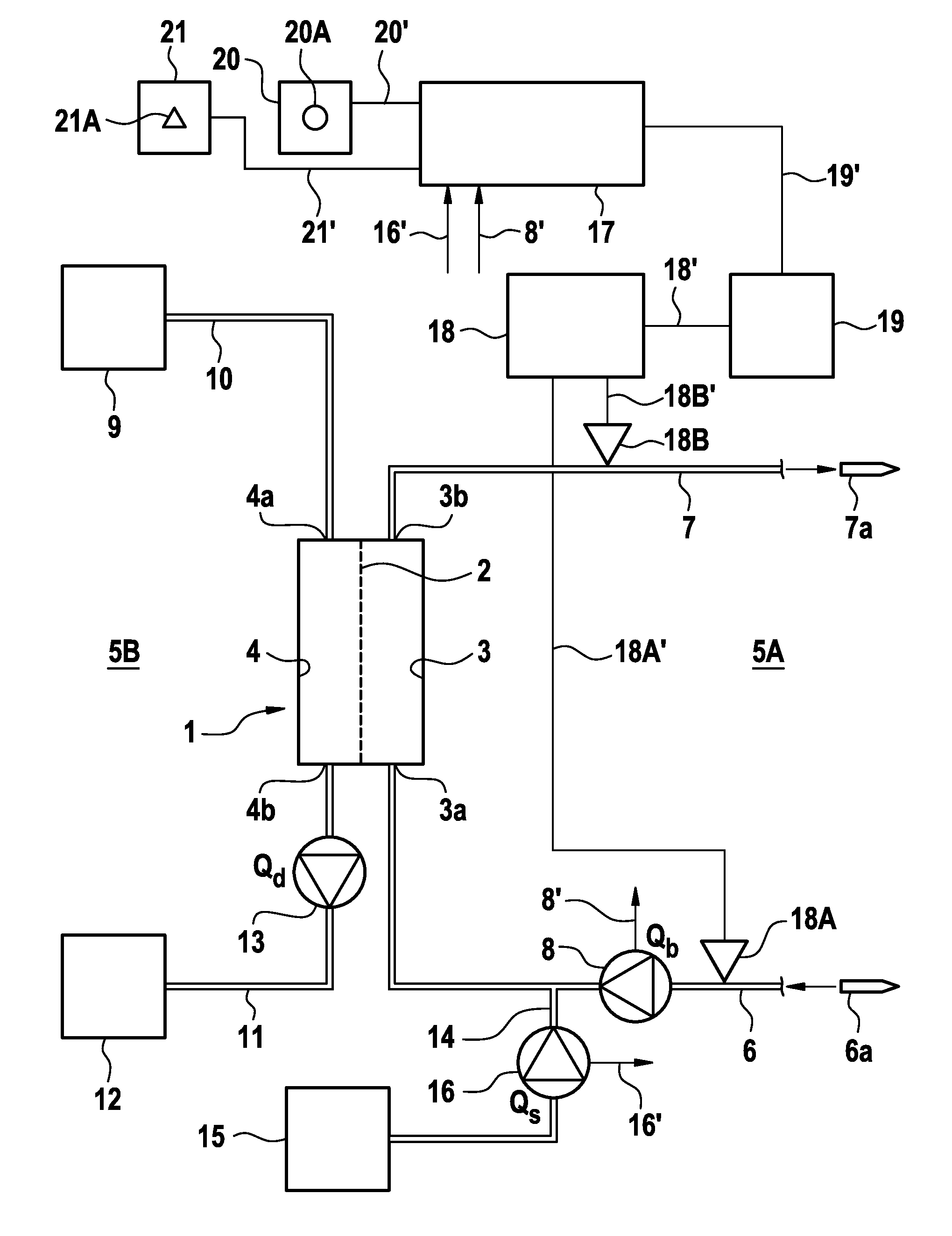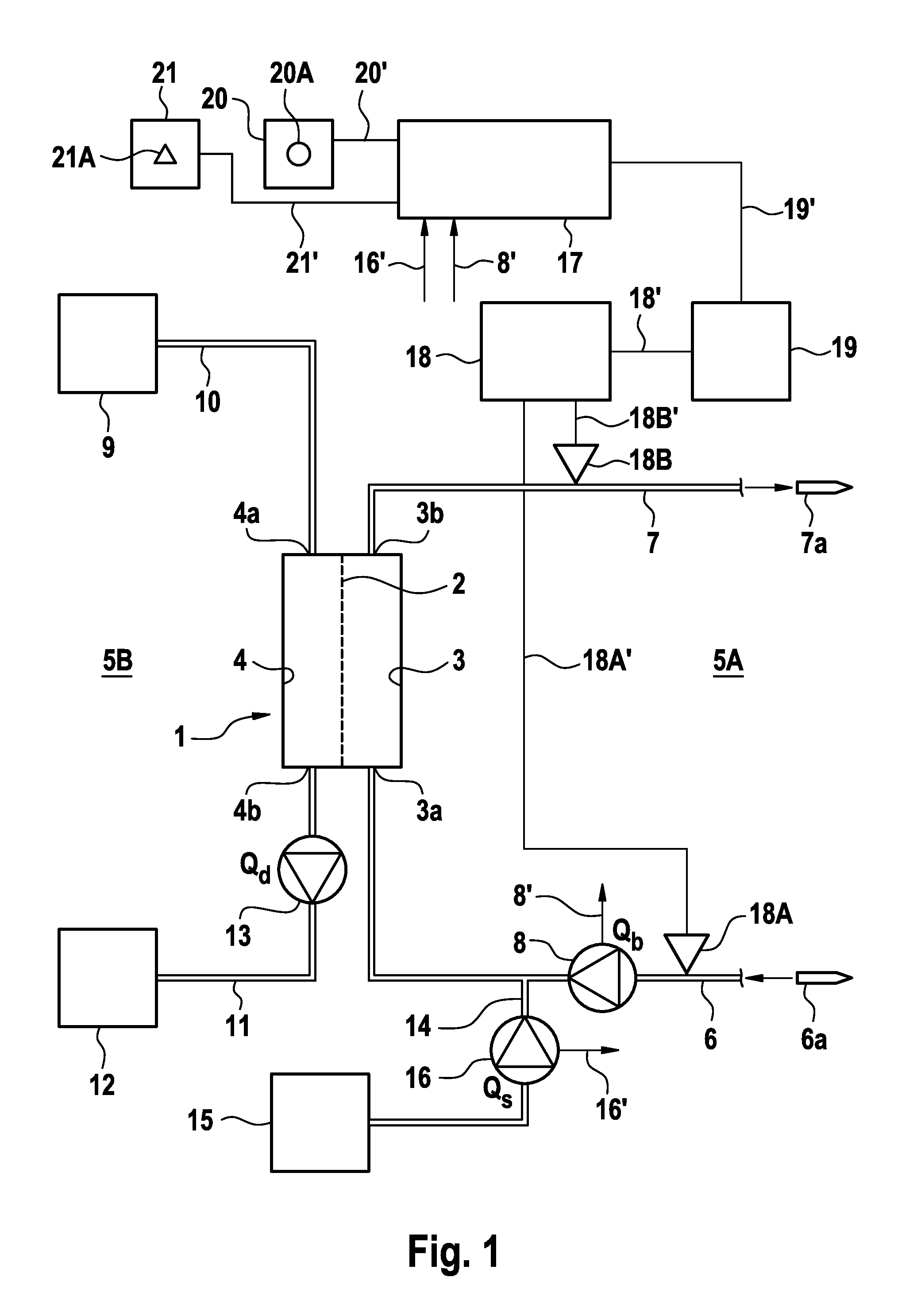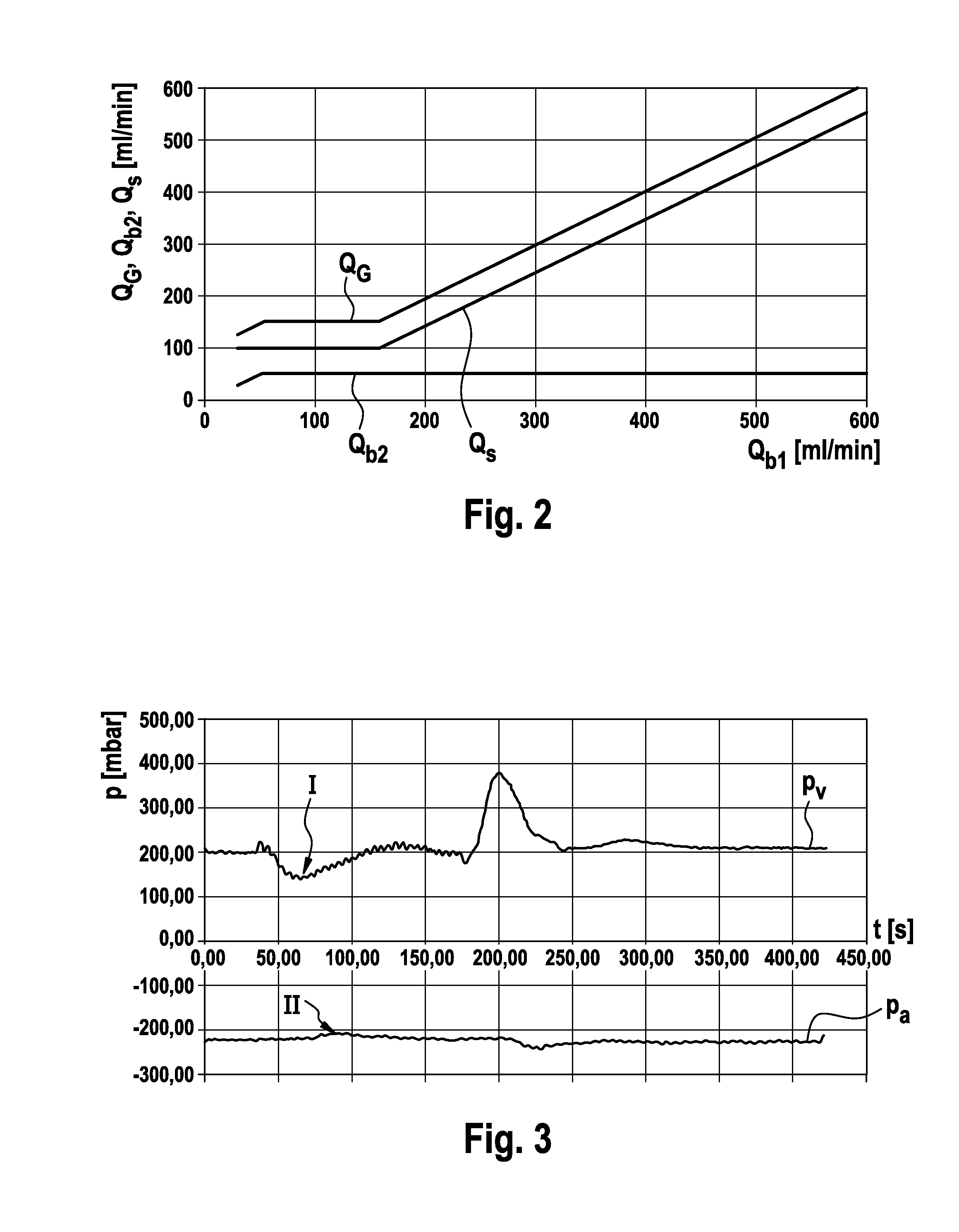Device and Method for Detecting the Recirculation During an Extracorporeal Blood Treatment
a technology of recirculation and blood treatment, which is applied in the direction of moving filter element filters, filtration separation, separation processes, etc., can solve the problems of requiring the reversal of blood flow, the loss of vascular access, and the risk of fistula thrombosis, so as to achieve rapid and reliable detection, and save a great deal of money
- Summary
- Abstract
- Description
- Claims
- Application Information
AI Technical Summary
Benefits of technology
Problems solved by technology
Method used
Image
Examples
Embodiment Construction
[0036]FIG. 1 shows in a simplified diagrammatic representation only the main components of an extracorporeal blood treatment apparatus, which comprises a device for detecting the recirculation.
[0037]The present blood treatment apparatus is a haemo(dia)filtration apparatus, which comprises a dialyser 1, which is separated by a semipermeable membrane 2 into a first chamber 3 through which blood flows, which is referred to in the following as a blood chamber, and a second chamber 4 through which dialysing fluid flows, which is referred to as a dialyser fluid chamber. First chamber 3 is incorporated into an extracorporeal blood circuit 5A, whilst second chamber 4 is incorporated into dialysing fluid system 5B of the haemo(dia)filtration apparatus.
[0038]Extracorporeal blood circuit 5A comprises an arterial blood line 6, which leads from an arterial cannula 6a to inlet 3a of blood chamber 3, and a venous blood line 7, which leads away from outlet 3b of blood chamber 3 of dialyser 1 and le...
PUM
| Property | Measurement | Unit |
|---|---|---|
| blood flow rate Qb1 | aaaaa | aaaaa |
| blood flow rate Qb1 | aaaaa | aaaaa |
| blood flow rate | aaaaa | aaaaa |
Abstract
Description
Claims
Application Information
 Login to View More
Login to View More - R&D
- Intellectual Property
- Life Sciences
- Materials
- Tech Scout
- Unparalleled Data Quality
- Higher Quality Content
- 60% Fewer Hallucinations
Browse by: Latest US Patents, China's latest patents, Technical Efficacy Thesaurus, Application Domain, Technology Topic, Popular Technical Reports.
© 2025 PatSnap. All rights reserved.Legal|Privacy policy|Modern Slavery Act Transparency Statement|Sitemap|About US| Contact US: help@patsnap.com



